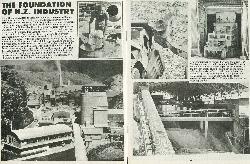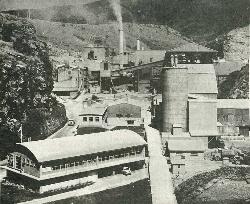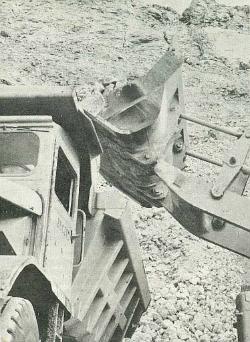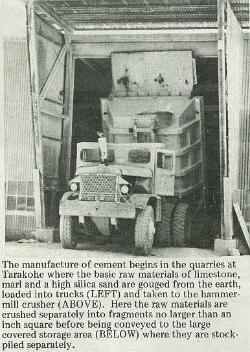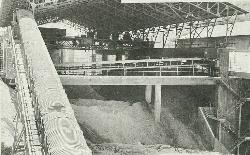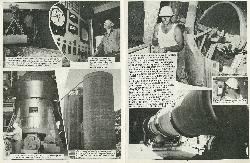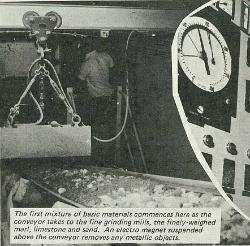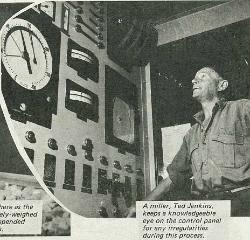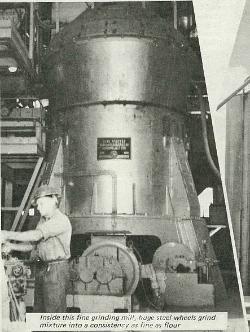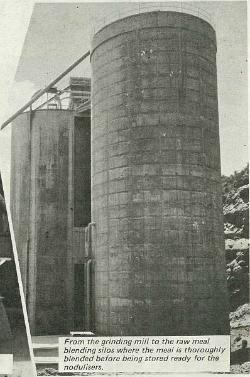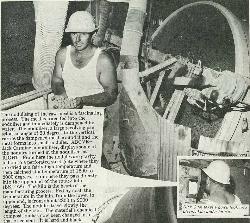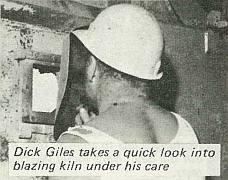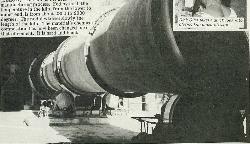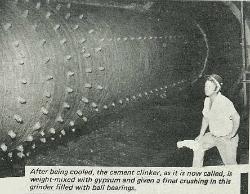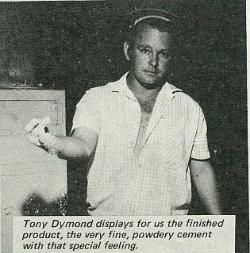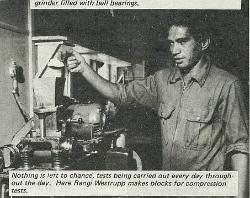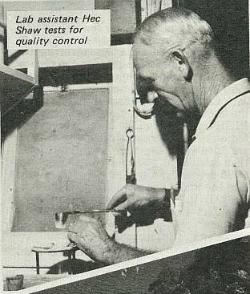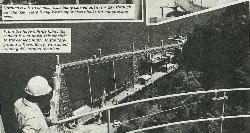34
The Foundation of N.Z. Industry
Upon the rock quarries of Tarakohe, countless thousands of homes and industries have been built. And the foundations upon which they were built - originating from the quarries - stand as monuments throughout New Zealand to the efforts of men who manufacture cement for the Golden Bay Cement Company at its modern plant at Tarakohe, on Golden Bay. These men don't look upon themselves as monument builders. For them, the job is a dusty one in extremes of heat and cold. The transformation of rock into the powdery cement is, however, a fascinating process in which we thought you would be interested. A few brief facts about the company. It began operations in 1909 (plant capacity 20,000 tons annually) and today, 60 years later, its capacity is 360,000 tons. The plant produces 30 per cent of New Zealand s needs. The finished product is shipped from Tarakohe by ship - specially built for the cement trade - and by road, in silos for industries which require big bulk supplies, and in bags, for the smaller jobs like that being undertaken at TOP on the reclamation. The big picture was taken from the air slide, from the hill-top silos to the wharf, showing the plant.
35
The manufacture of cement begins in the quarries at Tarakohe where the basic raw materials of limestone, marl and a high silica sand are gouged from the earth, loaded into trucks (LEFT) and taken to the hammer-mill crusher (ABOVE). Here the raw materials are crushed separately into fragments no larger than an inch square before being conveyed to the large covered storage area (BELOW) where they are stockpiled separately.
36
The first mixture of basic materials commences here as the conveyor takes to the fine grinding mills, the finely-weighed marl, limestone and sand. An electro magnet suspended above the conveyor removes any metallic objects.
A miller, Ted Jenkins, keeps a knowledgeable eye on the control panel for any irregularities during this process.
Inside this fine grinding mill, huge steel wheels grind mixture into a consistency as fine as flour
From the grinding mill to the raw meal blending silos where the meal is thoroughly blended before being stored ready for the nodulisers.
37
The nodulising of the raw meal is a fascinating process. The meal is force fed into the noduliser and immediately is dampened by water. The noduliser, a large revolving pan set at an angle of 20 degrees to the vertical, carries the dampened meal around it and the meal forms into small nodules. Above Jack Carmine, a noduliser, displays some of the nodules formed in the nodulisers at RIGHT. From here the nodules are gravity fed on to a perforated steel grate where they are dried at a fairly high temperature and then calcined at a temperature of 1800 to 2000 degrees. From here they pass directly into the upper end of the rotary kiln (Below). The kiln is the heart of the manufacturing process. Fed by coal, the temperature in the kiln, from the lower to upper end, is from about 2800 to 2000 degrees. The nodules travel slowly the length of the kiln. The material's chemical composition has now been changed into that of cement. It is hard and black.
38
After being cooled, the cement clinker, as it is now called, is weight-mixed with gypsum and given a final crushing in this grinder filled with ball bearings.
Tony Dymond displays for us the finished product, the very fine, powdery cement with that special feeling.
Nothing is left to chance, tests being carried out every day through-out the day. Here Rangi Westrupp makes blocks for compression tests.
Lab assistant Hec Shaw tests for quality control
From the huge hillside kilns, the cement is sent down this air slide to the cement ships. In the foreground is Kevin Barry, who acted as our guide around the plant.


